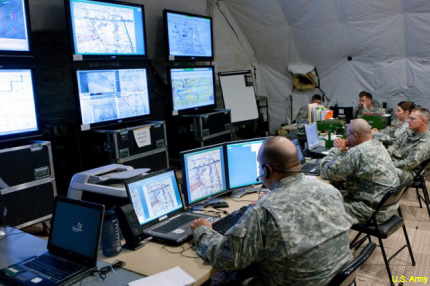Army WAVES off the mobile disconnect
The software connects disparate radios, phones and PCs, enabling communications between U.S. military, coalition and emergency response units.

WAVE will eventually replace the Army’s current command-post VOIP.
Joint operations such as those involved in disaster relief can run into communications problems, as a mish mash of radios, smartphones and other devices can keep units from talking to each other. The Army is planning to unscramble that problem with a solution that can link any device with voice-enabled IP.
The service on June 30 awarded a $13.75 million contract to Motorola subsidiary Twisted Pair for its WAVE technology, which turns any communications into voice over IP, allowing them to communicate regardless of the device (radio, phone, PC) or the network. WAVE, for instance, would let devices of the Army tactical network communicate with devices used by Marines, Special Forces, coalition forces or commercial devices used by local responders, the Army said in a release.
WAVE isn’t exactly new. The Defense Department has put it to some use since 20002, and in 2009 the software received a Certificate of Networthiness for use at Army installations. But bringing it into the tactical network is big step forward, providing a common solution across all Army units.
Before adding it to the network, the Army tested WAVE in May 2014 during a Network Integration Evaluation, one of the multi-week exercises held at Fort Bliss, Texas, and White Sands Missile Range, N.M., in which the service assesses new technologies.
"The NIE provided a venue for us to pursue a solution for a longstanding gap in our portfolio and seek soldier feedback on its operational utility," said Jennifer Zbozny, chief engineer for the Program Executive Office Command, Control and Communications – Tactical (PEO - C3T). "With WAVE, key leaders were able to invite participants to talk with each other over the network regardless of whether they were on a desktop computing platform, VoIP phone or radio net. WAVE efficiently distributed critical voice anywhere on the tactical network and proved to be a viable solution for voice collaboration."
WAVE will be deployed to support programs of record under PEO - 3CT, including as part of the Warfighter Information Network-Tactical Increment 1’s Disaster Incident Response Emergency Communications Terminal. With the technology, DIRECT will be able to link the Army with local responders and state and federal emergency managers, enabling each group to use its own equipment without worrying about having common radios.
NEXT STORY: Lockheed Martin begins layoffs at NORAD




